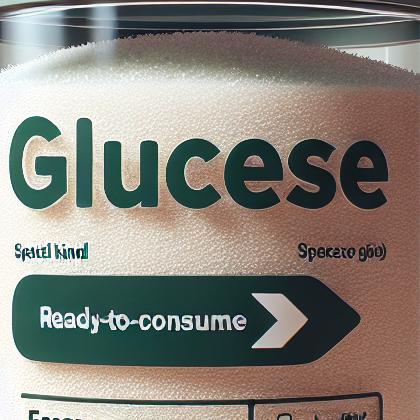Glucose

Glucose is a sugar with the molecular formula C6H12O6. The name "glucose" (/ˈɡluːkoʊs/) comes from the Greek word γλευκος, meaning "sweet wine, must".The suffix "-ose" is a chemical classifier, denoting a carbohydrate. It is also known as dextrose or grape sugar. With 6 carbon atoms, it is classed as a hexose, a sub-category of monosaccharides. α-D-glucose is one of the 16 aldose stereoisomers. The D-isomer (D-glucose) occurs widely in nature, but the L-isomer (L-glucose) does not. Glucose is made during photosynthesis from water and carbon dioxide, using energy from sunlight. The reverse of the photosynthesis reaction, which releases this energy, is a very important source of power for cellular respiration. Glucose is stored as a polymer, in plants as starch and in animals as glycogen.
Glucose Pairs With:

Glucose Properties:
| Food Property | Type | Description |
|---|---|---|
| Flavor Profile | Sweet | Glucose has a sweet flavor profile, providing a source of sweetness in food products. |
| Nutritional Value | Macronutrients | Glucose is a carbohydrate and serves as a source of quick energy for the body. |
| Micronutrients | Glucose does not contain significant amounts of micronutrients like vitamins and minerals. | |
| Fiber | Glucose does not contain fiber as it is a simple sugar. | |
| Chemical Composition | Acidity/Alkalinity (pH) | Glucose has a neutral pH of around 7. |
| Cooking Behavior | Heat Conductivity | Glucose can caramelize when exposed to high heat, adding flavor and color to dishes. |
| Water Retention | Glucose can help retain moisture in baked goods, contributing to their texture and freshness. |
Food Pairing App - Version 1.2.0
